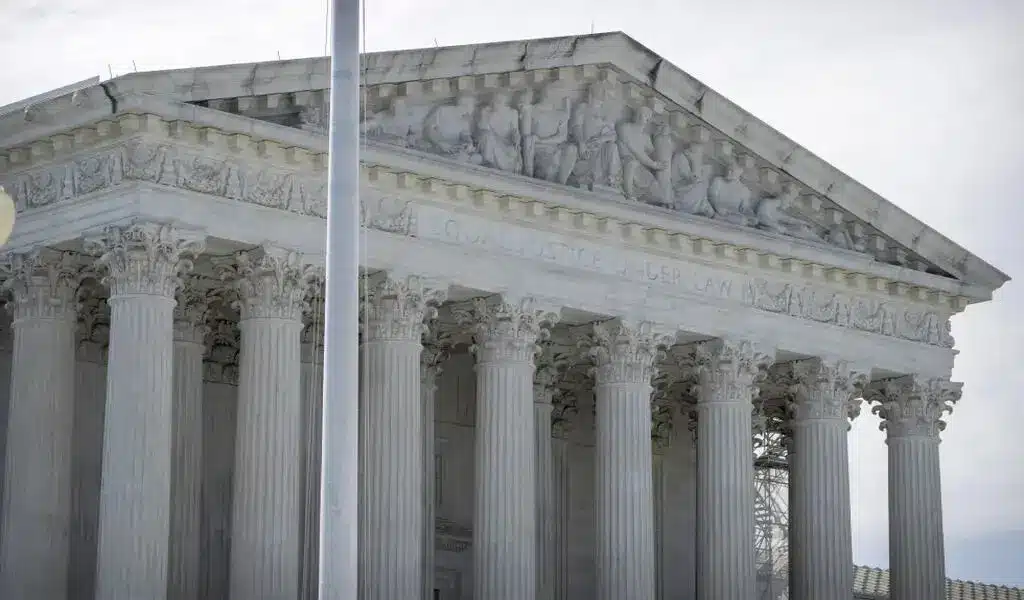News
Australian Filmmaker David Tucker Makes Documentary about the Bloody Events at Bangkok’s Thammasat University on Oct. 6, 1976

Australian filmmaker David Tucker, left, and his colleague Patron Phoothong walk through a residential neighborhood near Thammasat University in Bangkok
.
.
BANGKOK – A battered body hangs from a tree as a man swings a folding chair over his head, preparing to smash it into the corpse. Spectators watch intently at a slight distance, some smiling, as if watching a Punch and Judy show.
A photo of that moment immortalizes the bloody events of Oct. 6, 1976, when heavily armed security forces shot up Bangkok’s Thammasat University campus and killed scores of students, while right-wing vigilantes captured and lynched would-be escapees. Even so, what happened there, and why, is to some degree forgotten in Thailand.
“Younger Thai people look at the photo and ask where it is from,” said Australian filmmaker David Tucker, who is making a documentary about the killings. “They have no idea about the sixth of October. Some say, ‘It must have come from another country. It couldn’t have happened in Thailand.’ People old enough to remember October 6 can guess where it is from and some have seen the picture before, but generally speaking, people are reluctant to talk.”
.
.
How reluctant? No one in that Pulitzer Prize-winning photo – the victim, the attacker or any of the dozens of spectators – has been identified in the 40 years since Associated Press photographer Neal Ulevich shot it.
That fact intrigued Tucker, who has teamed up with Thai researchers who are attempting to put names to the long-ago faces. They hope to harness the power of social media to elicit more information, and this week their website, www.6Oct-photo.com , went live.
“It’s something the government doesn’t want them to talk about,” Tucker said, “but I think also a reluctance because the event is hard to reconcile with how Thais see themselves. They are famous for being a gentle and harmonious society and yet right here in the middle of their history is an event that is characterized by savagery and violence, right in the middle of downtown Bangkok.”
Anocha Suwichakornpong, a Thai director who has made a film inspired by the events of Oct. 6, sees parallels with modern-day Thailand. The military seized control from an elected government in May 2014, following months of sometimes violent protests, and appears assured of maintaining control for the next several years.
“I feel the political climate of the recent years has been quite similar to that of 1970s Thailand, especially in the days leading up to the last coup (in 2014), whereby right-wingers and ultra-royalists were becoming more extreme and at the same time the military has been gaining more power. It’s almost like we are living in a time warp,” she said.
Three years before the 1976 killings, students spearheaded protests forcing Thailand’s unpopular military dictators to flee the country, ushering in real parliamentary democracy. It was a tumultuous time to manage such a transition. In 1975, three neighboring countries – Vietnam, Laos and Cambodia – had been taken over by communists. Thailand had been a staunch ally of the United States in the Vietnam War, but Washington was now turning tail in Southeast Asia, and its protective shield carried no convincing guarantee.
To Thailand’s establishment, democracy looked messy, divisive, pitting farmers against landowners, workers against employers. The Marxist rhetoric of student activists hinted at an enemy within.
In the autumn of 1976, the students overplayed their hand when they protested the return to Thailand of one of the ousted dictators. A skit meant to represent the police killing of two activists was misrepresented by right-wing media as insulting the country’s revered royal family. Students kept up their protests even as army-backed right-wing groups began to howl for blood.
By midnight Oct. 5, the 3,000 to 4,000 protesting students inside Thammasat were under siege. Irate royalists and organized thugs gathered outside gates that the students had locked for their own protection. Police, many from heavily armed special units trained for combat, fired revolvers, assault rifles, grenade launchers and even anti-tank weapons upon the students, a handful of whom are believed to have returned fire with small arms.
By midmorning, the police were sweeping the university grounds and buildings, making their student prisoners strip off shirts and lie face down on the central athletic field. Thugs rushed in unimpeded, trying to snatch vulnerable students on the fringes, even seeking to take the wounded from ambulances.
Hanged bodies were battered until unrecognizable. Corpses had stakes driven into them. A pyre was made of four casually stacked victims. All of it was in plain view on a public field outside the university.
Ulevich took the photo of the hanging, one of 12 photos of the scene that earned him a Pulitzer, just after leaving the university grounds. He had been anxious that if he stayed too long, his film might be seized.
“When I got to the campus gate,” he said in an interview at his Colorado home last week, “I saw a commotion under two trees in the large common field that is in the center of Bangkok.
“I walked over to one and saw the man with the chair beating one of the hanged bodies over the head. Two trees away there was another hanged body. They were both quite dead by that time.”
The official death toll was 46; more reliable estimates from scholars put it upwards of 100.
When the army seized power later that day, it imposed a news blackout. Newspapers were temporarily shut down, film and notes seized from reporters. A TV announcer who put footage of the carnage on air was immediately fired.
But pictures from international news and broadcast agencies beat the blackout. Newspapers around the world published the shocking images.
It was 20 years before Thais even began commemorating the massacre, with a mass gathering at Thammasat and the organized publication of many books. Smaller commemorations then became a tradition, but in 2014, the military government ordered politics to be kept out of the proceedings.
The junta has shown no signs of interfering with this year’s commemorations, though its critics are among the organizers and events have been expanded for the first time to two other Bangkok universities.
Ulevich’s photo is the main design element for many of the posters marking the 40th anniversary. It also has been an inspiration to Thai artists, including Anocha, whose independent feature “By the Time It Gets Dark” is making the festival rounds. The movie is about a filmmaker working on a movie based on a writer who had been a student activist in the 1970s.
Ulevich’s photo, she said in an email, “has served as a reminder (to those who have forgotten) to which depth Thai society can sink into in the grip of hysteria and madness. And to those who had not lived through the experience, to ignite something in them that hopefully can help prevent such barbarity from happening again.”
—
AP video journalists Jerry Harmer and Tassanee Vejpongsa in Bangkok contributed to this report.

News
Google’s Search Dominance Is Unwinding, But Still Accounting 48% Search Revenue

Google is so closely associated with its key product that its name is a verb that signifies “search.” However, Google’s dominance in that sector is dwindling.
According to eMarketer, Google will lose control of the US search industry for the first time in decades next year.
Google will remain the dominant search player, accounting for 48% of American search advertising revenue. And, remarkably, Google is still increasing its sales in the field, despite being the dominating player in search since the early days of the George W. Bush administration. However, Amazon is growing at a quicker rate.
Google’s Search Dominance Is Unwinding
Amazon will hold over a quarter of US search ad dollars next year, rising to 27% by 2026, while Google will fall even more, according to eMarketer.
The Wall Street Journal was first to report on the forecast.
Lest you think you’ll have to switch to Bing or Yahoo, this isn’t the end of Google or anything really near.
Google is the fourth-most valued public firm in the world. Its market worth is $2.1 trillion, trailing just Apple, Microsoft, and the AI chip darling Nvidia. It also maintains its dominance in other industries, such as display advertisements, where it dominates alongside Facebook’s parent firm Meta, and video ads on YouTube.
To put those “other” firms in context, each is worth more than Delta Air Lines’ total market value. So, yeah, Google is not going anywhere.
Nonetheless, Google faces numerous dangers to its operations, particularly from antitrust regulators.
On Monday, a federal judge in San Francisco ruled that Google must open up its Google Play Store to competitors, dealing a significant blow to the firm in its long-running battle with Fortnite creator Epic Games. Google announced that it would appeal the verdict.
In August, a federal judge ruled that Google has an illegal monopoly on search. That verdict could lead to the dissolution of the company’s search operation. Another antitrust lawsuit filed last month accuses Google of abusing its dominance in the online advertising business.
Meanwhile, European regulators have compelled Google to follow tough new standards, which have resulted in multiple $1 billion-plus fines.

Pixa Bay
Google’s Search Dominance Is Unwinding
On top of that, the marketplace is becoming more difficult on its own.
TikTok, the fastest-growing social network, is expanding into the search market. And Amazon has accomplished something few other digital titans have done to date: it has established a habit.
When you want to buy anything, you usually go to Amazon, not Google. Amazon then buys adverts to push companies’ products to the top of your search results, increasing sales and earning Amazon a greater portion of the revenue. According to eMarketer, it is expected to generate $27.8 billion in search revenue in the United States next year, trailing only Google’s $62.9 billion total.
And then there’s AI, the technology that (supposedly) will change everything.
Why search in stilted language for “kendall jenner why bad bunny breakup” or “police moving violation driver rights no stop sign” when you can just ask OpenAI’s ChatGPT, “What’s going on with Kendall Jenner and Bad Bunny?” in “I need help fighting a moving violation involving a stop sign that wasn’t visible.” Google is working on exactly this technology with its Gemini product, but its success is far from guaranteed, especially with Apple collaborating with OpenAI and other businesses rapidly joining the market.
A Google spokeswoman referred to a blog post from last week in which the company unveiled ads in its AI overviews (the AI-generated text that appears at the top of search results). It’s Google’s way of expressing its ability to profit on a changing marketplace while retaining its business, even as its consumers steadily transition to ask-and-answer AI and away from search.

Google has long used a single catchphrase to defend itself against opponents who claim it is a monopoly abusing its power: competition is only a click away. Until recently, that seemed comically obtuse. Really? We are going to switch to Bing? Or Duck Duck Go? Give me a break.
But today, it feels more like reality.
Google is in no danger of disappearing. However, every highly dominating company faces some type of reckoning over time. GE, a Dow mainstay for more than a century, was broken up last year and is now a shell of its previous dominance. Sears declared bankruptcy in 2022 and is virtually out of business. US Steel, long the foundation of American manufacturing, is attempting to sell itself to a Japanese corporation.
SOURCE | CNN
News
2024 | Supreme Court Won’t Hear Appeal From Elon Musk’s X Platform Over Warrant In Trump Case

Washington — Trump Media, The Supreme Court announced Monday that it will not hear an appeal from social media platform X about a search warrant acquired by prosecutors in the election meddling case against former President Donald Trump.
The justices did not explain their rationale, and there were no recorded dissents.
The firm, which was known as Twitter before being purchased by billionaire Elon Musk, claims a nondisclosure order that prevented it from informing Trump about the warrant obtained by special counsel Jack Smith’s team violated its First Amendment rights.
The business also claims Trump should have had an opportunity to exercise executive privilege. If not reined in, the government may employ similar tactics to intercept additional privileged communications, their lawyers contended.
Supreme Court Won’t Hear Appeal From Elon Musk’s X Platform Over Warrant In Trump Case
Two neutral electronic privacy groups also joined in, urging the high court to hear the case on First Amendment grounds.
Prosecutors, however, claim that the corporation never shown that Trump utilized the account for official purposes, therefore executive privilege is not a problem. A lower court also determined that informing Trump could have compromised the current probe.

Trump utilized his Twitter account in the weeks preceding up to his supporters’ attack on the Capitol on January 6, 2021, to spread false assertions about the election, which prosecutors claim were intended to create doubt in the democratic process.
The indictment describes how Trump used his Twitter account to encourage his followers to travel to Washington on Jan. 6, pressuring Vice President Mike Pence to reject the certification, and falsely claiming that the Capitol crowd, which battered police officers and destroyed glass, was peaceful.
Supreme Court Won’t Hear Appeal From Elon Musk’s X Platform Over Warrant In Trump Case
That case is now moving forward following the Supreme Court’s verdict in July, which granted Trump full immunity from criminal prosecution as a former president.
The warrant arrived at Twitter amid quick changes implemented by Musk, who bought the company in 2022 and has since cut off most of its workforce, including those dedicated to combating disinformation and hate speech.
SOURCE | AP
News
The Supreme Court Turns Down Biden’s Government Appeal in a Texas Emergency Abortion Matter.

(VOR News) – A ruling that prohibits emergency abortions that contravene the Supreme Court law in the state of Texas, which has one of the most stringent abortion restrictions in the country, has been upheld by the Supreme Court of the United States. The United States Supreme Court upheld this decision.
The justices did not provide any specifics regarding the underlying reasons for their decision to uphold an order from a lower court that declared hospitals cannot be legally obligated to administer abortions if doing so would violate the law in the state of Texas.
Institutions are not required to perform abortions, as stipulated in the decree. The common populace did not investigate any opposing viewpoints. The decision was made just weeks before a presidential election that brought abortion to the forefront of the political agenda.
This decision follows the 2022 Supreme Court ruling that ended abortion nationwide.
In response to a request from the administration of Vice President Joe Biden to overturn the lower court’s decision, the justices expressed their disapproval.
The government contends that hospitals are obligated to perform abortions in compliance with federal legislation when the health or life of an expectant patient is in an exceedingly precarious condition.
This is the case in regions where the procedure is prohibited. The difficulty hospitals in Texas and other states are experiencing in determining whether or not routine care could be in violation of stringent state laws that prohibit abortion has resulted in an increase in the number of complaints concerning pregnant women who are experiencing medical distress being turned away from emergency rooms.
The administration cited the Supreme Court’s ruling in a case that bore a striking resemblance to the one that was presented to it in Idaho at the beginning of the year. The justices took a limited decision in that case to allow the continuation of emergency abortions without interruption while a lawsuit was still being heard.
In contrast, Texas has been a vocal proponent of the injunction’s continued enforcement. Texas has argued that its circumstances are distinct from those of Idaho, as the state does have an exemption for situations that pose a significant hazard to the health of an expectant patient.
According to the state, the discrepancy is the result of this exemption. The state of Idaho had a provision that safeguarded a woman’s life when the issue was first broached; however, it did not include protection for her health.
Certified medical practitioners are not obligated to wait until a woman’s life is in imminent peril before they are legally permitted to perform an abortion, as determined by the state supreme court.
The state of Texas highlighted this to the Supreme Court.
Nevertheless, medical professionals have criticized the Texas statute as being perilously ambiguous, and a medical board has declined to provide a list of all the disorders that are eligible for an exception. Furthermore, the statute has been criticized for its hazardous ambiguity.
For an extended period, termination of pregnancies has been a standard procedure in medical treatment for individuals who have been experiencing significant issues. It is implemented in this manner to prevent catastrophic outcomes, such as sepsis, organ failure, and other severe scenarios.
Nevertheless, medical professionals and hospitals in Texas and other states with strict abortion laws have noted that it is uncertain whether or not these terminations could be in violation of abortion prohibitions that include the possibility of a prison sentence. This is the case in regions where abortion prohibitions are exceedingly restrictive.
Following the Supreme Court’s decision to overturn Roe v. Wade, which resulted in restrictions on the rights of women to have abortions in several Republican-ruled states, the Texas case was revisited in 2022.
As per the orders that were disclosed by the administration of Vice President Joe Biden, hospitals are still required to provide abortions in cases that are classified as dire emergency.
As stipulated in a piece of health care legislation, the majority of hospitals are obligated to provide medical assistance to patients who are experiencing medical distress. This is in accordance with the law.
The state of Texas maintained that hospitals should not be obligated to provide abortions throughout the litigation, as doing so would violate the state’s constitutional prohibition on abortions. In its January judgment, the 5th United States Circuit Court of Appeals concurred with the state and acknowledged that the administration had exceeded its authority.
SOURCE: AP
SEE ALSO:
Could Last-Minute Surprises Derail Kamala Harris’ Campaign? “Nostradamus” Explains the US Poll.
-

 News4 years ago
News4 years agoLet’s Know About Ultra High Net Worth Individual
-
Entertainment2 years ago
Mabelle Prior: The Voice of Hope, Resilience, and Diversity Inspiring Generations
-
News11 years ago
Enviromental Groups Tell Mekong Leaders Lao Dam Evaluation Process Flawed
-

 Health4 years ago
Health4 years agoHow Much Ivermectin Should You Take?
-

 Tech3 years ago
Tech3 years agoTop Forex Brokers of 2023: Reviews and Analysis for Successful Trading
-

 Lifestyles3 years ago
Lifestyles3 years agoAries Soulmate Signs
-

 Entertainment3 years ago
Entertainment3 years agoWhat Should I Do If Disney Plus Keeps Logging Me Out of TV?
-

 Health3 years ago
Health3 years agoCan I Buy Ivermectin Without A Prescription in the USA?


